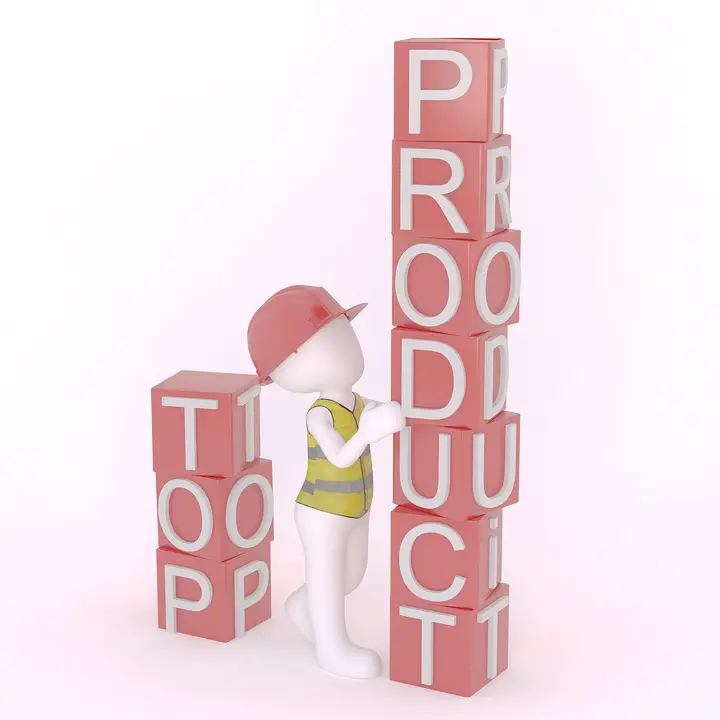So, you’ve got a bright idea bubbling in your brain. Maybe it’s an online course that’ll make the average Joe a six-figure earner, or perhaps it’s a digital planner that’ll help people organize their lives better than Marie Kondo on a caffeine high. Whatever it is, welcome to the rollercoaster of digital product development! Buckle up, because we’re about to take a wild ride from concept to click. Spoiler alert: there will be bumps, twists, and a lot of learning along the way.
The Lightbulb Moment: Turning Ideas into Gold
Before we dive into the nitty-gritty of product development, let’s talk about that euphoric moment when inspiration strikes. You know, that moment when you’re in the shower, and suddenly you’re a genius. But hold on! Not every idea is a winner. Here’s how to sift through your brain’s dumpster of ideas and find the golden nuggets:
-
Identify Pain Points: What problems are people facing that you can solve? Browse forums, social media, or even just ask your friends what drives them crazy. Spoiler: Their answers might just lead you to your next million-dollar idea.
-
Market Research: Before you start building your digital empire, check if your idea already exists. Tools like Google Trends, Keyword Planner, or even a good ol’ search can help you see if your idea is as unique as a unicorn.
- Validate Your Concept: Don’t just assume people will throw money at your idea. Create a simple landing page and run some ads to gauge interest. If nobody’s clicking, it’s time to pivot. Remember: the goal is to make money, not to win a participation trophy.
Building the Blueprint: Planning Your Digital Product
Alright, you’ve got your idea and some validation. Now it’s time to get down to the nitty-gritty of planning your digital product. Here’s where you build your roadmap to success:
1. Define Your Audience
Not everyone will want your product. Sorry to break it to you, but your mom isn’t your target market (unless she’s got a business or a hobby that aligns). Create a detailed customer avatar:
-
Demographics: Age, gender, location, income level.
- Psychographics: Interests, challenges, behaviors. What keeps them up at night?
2. Outline Your Product
Now that you know who you’re targeting, it’s time to outline what your product will look like. This is where you need to get strategic:
-
List Features and Benefits: What will your product include, and how will it help your audience? Don’t just list features—focus on benefits. “You’ll get a workout plan” is less enticing than “You’ll finally fit into those jeans from high school.”
- Create a Minimum Viable Product (MVP): Don’t overthink it. Your MVP should be the simplest version of your product that still provides value. Think of it as the “baby version” of your product. You can always add more features later.
Design and Development: Turning Ideas into Reality
Here comes the fun part—designing and developing your product. This stage can feel as daunting as assembling IKEA furniture without instructions, but I promise it’s easier with the right tools:
1. Choose Your Platform
If you’re creating an online course, platforms like Teachable or Thinkific are user-friendly options. For eBooks, you can use Canva or even Microsoft Word (hey, it gets the job done). Your choice depends on your product type:
-
Courses: Teachable, Thinkific, or Udemy.
-
eBooks: Canva, Google Docs, or Adobe InDesign.
- Membership Sites: Kajabi or Podia.
2. Design Like a Pro (Even If You’re Not)
Don’t let your lack of design skills scare you off. There are plenty of resources out there to make you look like a design wizard:
-
Templates: Use pre-made templates from sites like Creative Market or Envato.
-
Canva: Even your grandma can make stunning visuals with Canva. It’s user-friendly and has a ton of free resources.
- Hire a Freelancer: If you’re really struggling, platforms like Fiverr or Upwork have talented designers who can whip up something magical for a reasonable price.
3. Content Creation
Finally, you’ve got to create the content. This is where your product comes to life. Whether you’re filming videos, writing text, or creating graphics, make sure it’s high-quality. Remember, you’re trying to impress potential buyers, not your high school art teacher.
Launching Your Digital Product: Ready, Set, Go!
Congratulations! You’ve built something that’s not just a figment of your imagination but a real, tangible product. Now, let’s get it out into the world. This is where the fun (and chaos) begins.
1. Build Buzz Before Launch
If you think you can just throw your product out there and watch the money roll in, think again. You need to build hype. Here’s how:
-
Email List: If you don’t have one, start building it NOW. Offer a freebie related to your product to attract subscribers.
-
Social Media Teasers: Use Instagram, TikTok, and Facebook to drop hints about your launch. Create a countdown or share behind-the-scenes peeks.
- Engage with Your Audience: Respond to comments and messages. Build a community around your product. People are more likely to buy when they feel connected.
2. Launch Day Strategies
When launch day arrives, treat it like a party. You want people to show up and celebrate (read: buy your product). Here’s how to ensure it’s a success:
-
Limited-Time Offers: Create urgency with limited-time discounts or bonuses. Everyone loves a good deal, and a ticking clock adds pressure.
-
Webinar or Live Q&A: Host a live session to showcase your product. This allows potential buyers to ask questions and see the value firsthand.
- Leverage Affiliates: If you have friends or connections with a following, consider offering them a commission to promote your product. This can expand your reach significantly.
Post-Launch: The Real Work Begins
So, your product is launched, and sales are trickling in. Great! But your work isn’t done yet. Here’s how to keep the momentum going:
1. Gather Feedback
Ask your early customers for feedback. What did they love? What could be improved? Use this information to refine your product and make it even better.
2. Create a Sales Funnel
Don’t just sit back and relax. Create a sales funnel to turn casual visitors into paying customers. Use email marketing to nurture leads and upsell existing customers.
3. Monitor and Optimize
Keep an eye on your sales data and website analytics. What’s working? What’s not? Tweak your marketing strategies accordingly.
Conclusion: The Journey Is Just Beginning
Congratulations, you’ve made it through the wild world of digital product development! Just remember, this is not a “set it and forget it” kind of gig. The digital landscape is constantly evolving, and so should you. Keep innovating, learning, and adapting.
And there you have it—your roadmap from concept to click. Now, go out there and turn that brainchild of yours into a money-making machine! Just remember: the only thing standing between you and success is a little bit of hustle (and maybe a few late-night coffee runs). Happy hustling!






